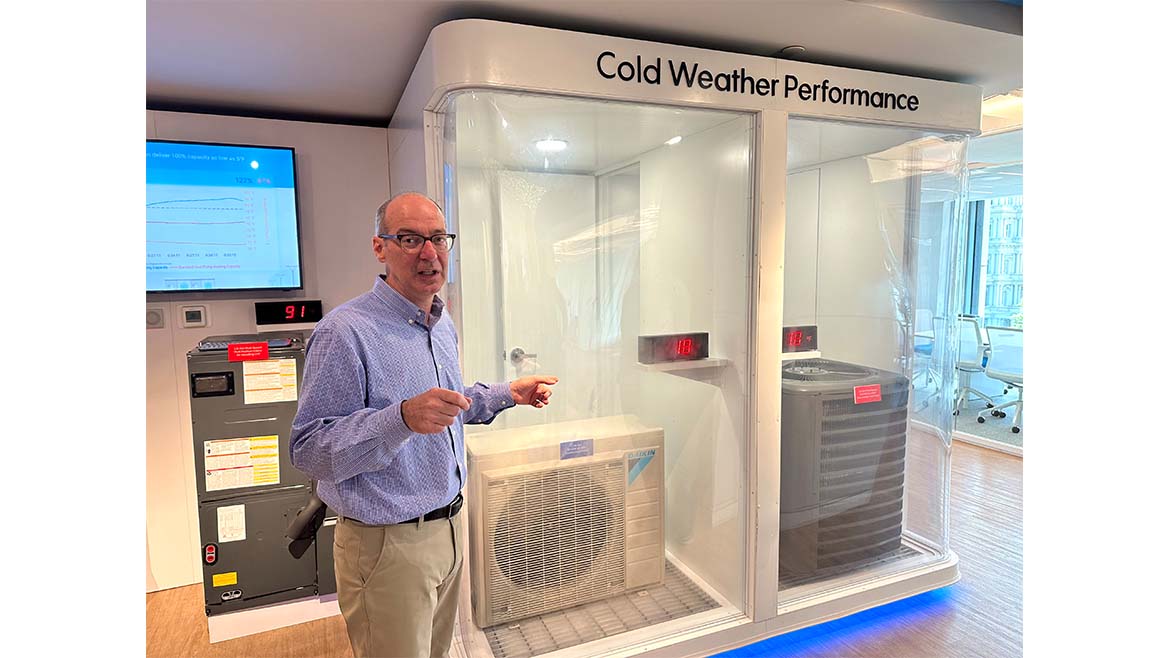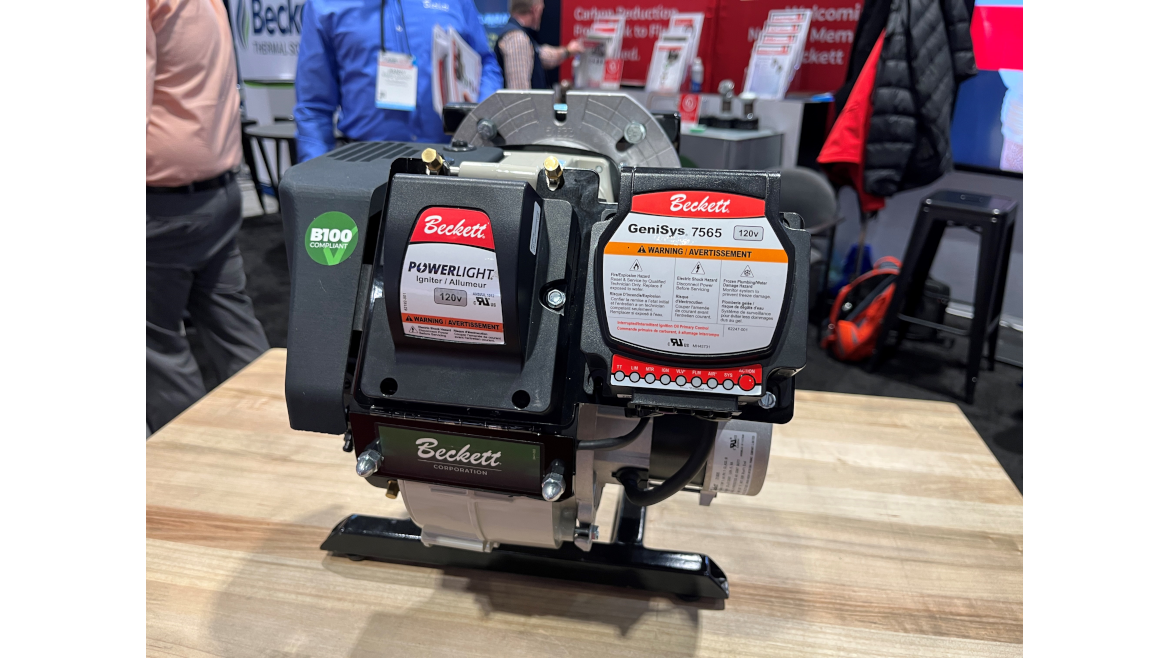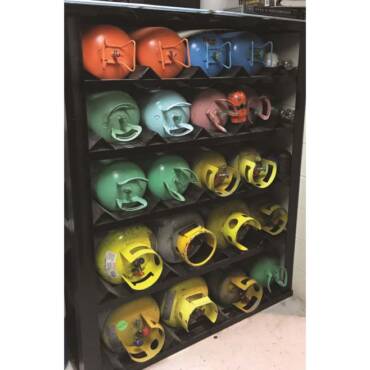– Dave Calabrese
Senior vice president
Daikin
The federal government has gotten very involved in many aspects of the HVAC industry in the last 10 years. One has to look no further than the refrigerant transition or heat pump tax credits included in the Inflation Reduction Act to realize decisions made in Washington D.C. quickly trickle down to an HVAC contracting business.
And it is the contractors who need to figure out how to deal with it.
It is fair to say that the majority of representatives in the nation’s capital have never changed out a furnace or completed a load calculation. There are exceptions to the rule. For instance, a U.S. Senator from Oklahoma Markwayne Mullin was the former owner of an HVAC business. There is also Rep. Daniel Webster from Florida and Randy Weber from Texas.
But for the vast majority of them, they need to be educated on the industry so decisions are not made that have unintended consequences.
I still remember when I first started in this industry and the federal government established a 13 SEER minimum efficiency jump that was much higher than expected. Did that equate to energy savings? Perhaps some. However, there was also a spike in window air conditioners as some consumers went that route instead of purchasing a new system — unintended consequences.
How does the industry educate the leaders in D.C.? Many major associations like ACCA, HARDI, and AHRI spend a lot of money lobbying Congress and holding fly-ins with their members. All good stuff.
One manufacturer specifically is investing heavily in this goal with some out-of-the-box thinking. Daikin has opened a Sustainability and Innovation Center in Washington D.C. to help with the education. In fact, it is a stone’s throw from the White House — prime real estate in the D.C. world.
I had the opportunity to tour this facility a few weeks back with Daikin director of government affairs Charlie McCrudden and Dave Calabrese, their senior vice president, government affairs, and deputy general manager of the Washington, D.C. office. I was very much impressed.
The showroom starts with an introduction to Daikin (I can’t blame them) but soon transitions into a tour that educates guests on cutting-edge HVAC technology. The issue of climate change is highlighted.
“This first climate change overview talks about where we are, how we got here, and where we may go unless we take some types of mitigation efforts,” McCrudden said. “That includes, obviously, refrigerants and energy use. We talk about direct emissions from refrigerants and then the indirect emissions from the power generated to run these systems.”
Other stops on the tour help explain decarbonization and inverter technology.
“There’s a lot of people who come through here who don’t know this technology,” Calabrese said. “Maybe there’s people from the Japanese Embassy or maybe there’s some people from the Capitol Hill, but they’re not a specialist on this stuff. It’s always good for them to sort of understand how the products work.”
The decarbonization station focuses on heat pump technology and how Daikin feels it can be the answer to long-term energy independence. It explains what decarbonization is and where it can be the best solution. It was refreshing in that it tells the entire story, including some of the challenges that can come with electrification.
A challenge, and one a contractor might face as well, is explaining that heat pump technology can also mean cooling.
“We always have these meetings and hear from people that the name needs to be changed, but I think it is too late for that. We just need to educate them on what the product does,” Calabrese said. “But to be honest, people really don’t know how an air conditioner works, either. It’s just our job to help them to understand.”
And if it is Daikin, there has to be an inverter technology portion of the showroom.
“Heat pump technology has always been our core, and especially with inverter technology — in other words, variable-speed technology,” Calabrese said. “And so, the purpose of the inverter technology display is to talk about the benefits of moving to an inverter compressor, as compared to the traditional, non-inverter compressor.”
Daikin is hoping this technology gets recognized by government incentive programs. They are quick to let guests know that when you look around the globe, specifically Japan and Europe, you see the technology is making up 80-90% of the systems, while variable-speed technology is still the standard in the United States.
“Moving to heat pumps has its benefits, but an inverter heat pump has tremendously more,” Calabrese said. “To be honest, we are really behind in the United States, and we are hoping a facility like this drives that point home. A picture is worth a thousand words. Sometimes when we would talk about inverter technology, all I would get back were blank stares. A place like this really speeds up the educational process.”
Calabrese also explained that Daikin is committed to promoting requirements and eligibility criteria that distinguish the difference between variable capacity technology and fixed speed technology, rather than imposing blanket performance level requirements for all technologies — a current issue in the U.S.
The showroom also showcases the cold weather performance of products. The cold weather performance station places an outdoor unit in a 12° chamber while the indoor unit blows 120° air, showing that heat pumps really do work in cold climates.
So as legislation and regulation of the HVAC industry continues to come from Washington D.C., here is hoping the folks making the decisions take a walk down Pennsylvania Avenue to get educated before they make the final call.
Whether you require installation, repair, or maintenance, our technicians will assist you with top-quality service at any time of the day or night. Take comfort in knowing your indoor air quality is the best it can be with MOE heating & cooling services Ontario's solution for heating, air conditioning, and ventilation that’s cooler than the rest.
Contact us to schedule a visit. Our qualified team of technicians, are always ready to help you and guide you for heating and cooling issues. Weather you want to replace an old furnace or install a brand new air conditioner, we are here to help you. Our main office is at Kitchener but we can service most of Ontario's cities
Source link




Add Comment